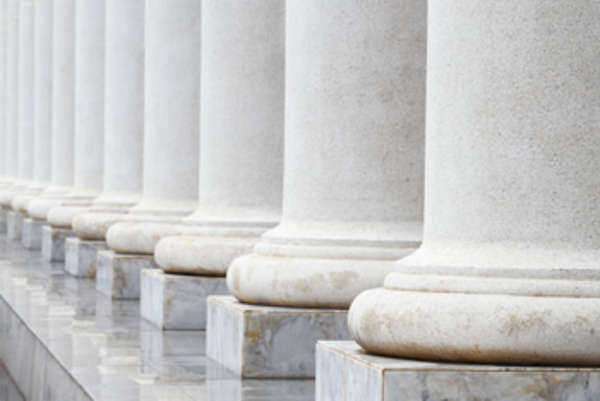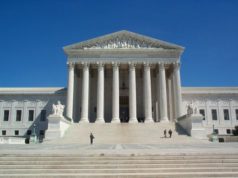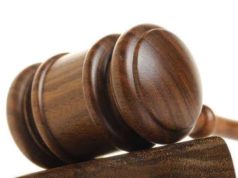Table of Contents
- 0.1 Introduction
- 0.2 Brown v. Board of Education (1954)
- 0.3 Regents of the University of California v. Bakke (1978)
- 0.4 New Jersey v. T.L.O. (1985)
- 0.5 Edgewood Independent School District v. Kirby (1989)
- 0.6 Conclusion
- 1 Brown v. Board of Education
- 2 Background
- 3 Supreme Court Hearing
- 4 Result
- 5 Tinker v. Des Moines Independent Community School District
- 6 Background
- 7 Supreme Court Hearing
- 8 Result

Introduction
Brown v. Board of Education (1954)
Regents of the University of California v. Bakke (1978)
New Jersey v. T.L.O. (1985)
Edgewood Independent School District v. Kirby (1989)
Conclusion
The Supreme Court of the United States has been responsible for deciding several cases pertaining to educational facilities, their educational policy, and their challenge of the U.S. Constitution.
The case, Brown v. Board of Education, become one of the most talked-about cases to ever be heard by the Court. The result of this landmark Supreme Court decision led to the overturning of the prior case heard by the Court, Plessy v. Ferguson, which upheld the “separate but equal” provision of public facilities, enforced by State governments and justified within the bounds of the Equal Protection Clause.
However, it was ultimately proved that the Equal Protection Clause of the Fourteenth Amendment does not permit racial segregation in schools. In addition, the Court applied the First Amendment of the Constitution, helping to protect the free speech rights of juveniles within the school setting.
In 1896, the Supreme Court decision of Plessy v. Ferguson determined that racial segregation within the United States was Constitutional in all public accommodations. The decision was largely based upon the doctrine of “separate but equal” in United States Constitutional law, justifying systems of segregation that were enforced in public facilities, where conditions of both accommodations were supposed to be maintained equally. After the end of the Reconstruction Era in the wake of the U.S. Civil War, the Federal Government left racial segregation up to the states to decide, and a total of 17 states adopted rules of racial separation.
Plessy v. Ferguson marked the first important case that challenged racial segregation as Constitutional in the United States at the Supreme Court level. Although the Court found State segregation to be Constitutional, this case was a prerequisite to other cases to follow, which also challenged the notion of “separate but equal” in educational settings such as public schools.
Brown v. Board of Education
In 1954, “separate but equal” facilities were still in use, as upheld by Plessy v. Ferguson. Education, however, was yet to be fully challenged and the Supreme Court case, Brown v. Board of Education, challenged whether or not education should be included as a “separate but equal” accommodation.
There was no doubt that the education black children received in separate schools did not meet the same quality standards as the schools in which white children attended. The Court decided in a 9-0 vote that denying black children the same educational opportunities as white children were unconstitutional and should be against all schools’ education policy. Not only did this claim a victory for black people in the United States to receive quality educations, but it also helped paved the way for the Civil Rights Movement of the 1960s and led to public integration of both white and black people.
Background
The idea of racial segregation in the United States had been in use for nearly a century since the end of the Civil War prior to this case and was enforced by Plessy v. Ferguson. A total of 17 states had specific legislation that required white and black children to be separated in public school settings. In 1951, a lawsuit was filed against the Board of Education of the City of Topeka, Kansas, which was heard in the United States District Court for the District of Kansas. Thirteen parents living in Topeka filed suit on behalf of their twenty children calling for a reversal of the policy of racial segregation in their elementary schools.
Under Kansas law, school segregation was permitted, though it was not required for schools in communities with a population above 15,000. The parents claimed that they had attempted to enroll their children in the public schools that were closer in location to their homes, though they were denied and relocated to segregated schools further away. The District Court found in favor of the Board of Education, citing the case of Plessy v. Ferguson.
Supreme Court Hearing
The Supreme Court chose to hear the case, as it combined five other cases around the United States with similar matters into Brown v. Board of Education, paying special attention to the Fourteenth Amendment of the Constitution guaranteeing equal protection to all United States citizens. The clause that guaranteed equal protection was applied to the notion that all children should be given equal education opportunities. It was discovered before the final Supreme Court decision was issued that a majority of the Justices on the Court were already predisposed to overturning Plessy v. Ferguson. The argument of whether or not to end segregation was based on the notion of black people being inferior to white people. As a result, all but one Justice rejected segregation.
Result
After the Supreme Court ruled in favor of Brown, Topeka, Kansas quietly integrated all of their schools, which were largely done without demonstration or opposition. Not everyone was happy about the decision, however, as Virginia Senator Harry F. Byrd, Sr. organized what was known as the “Massive Resistance”, aimed to close public schools rather than desegregate them. Arkansas Governor Orval Faubus ordered the State National Guard to block the entry of black children into public schools in Little Rock.
Tinker v. Des Moines Independent Community School District
This Supreme Court decision helped to shape the rights of children in public schools in the United States. The case has continued to have influence years after it was decided, as many courts still use what is known as the “Tinker test” to determine if the disciplinary actions of school officials violate a child’s First Amendment rights.
Background
The case revolved around John F. Tinker, his sister Mary Beth Tinker, and Christopher Eckhardt, who decided to wear black armbands displaying peace symbols as they attended school one day. The purpose of the armbands was to protest the Vietnam War, while simultaneously supporting Senator Robert F. Kennedy’s Christmas Truce of the War. The school board immediately passed a policy that banned the armbands in school and any student that violated the policy would be suspended. All three children chose to violate the policy, and as a result, they were suspended from school until January 1, 1966.
When the Iowa Civil Liberties Union heard about the children and their suspension, they approached the Tinker family and convinced them to file the lawsuit in U.S. District Court. The District Court upheld the decision of the Des Moines School Board, and after an appeal to the 8th Circuit, the decision was upheld once again after a tie vote. The case was finally brought to the Supreme Court on November 12, 1968.
Supreme Court Hearing
The Supreme Court, in a 7 to 2 decision, decided in favor of the Tinker family, citing that the First Amendment of the Constitution applied to public schools. The main reasoning was that if the school officials wanted to censor their speech in a justified manner, especially such silent messages as an armband, they should have proven that the reasoning was more than just a desire to “avoid the discomfort and unpleasantness that always accompany an unpopular viewpoint.” Ultimately, the Court believed that the armbands in no way caused disruption and the actions they took for symbolic speech were protected by the U.S. Constitution.
Result
Tinker is a case that is still referenced in courts when deciding battles pertaining to student limitations in freedom of speech in public schools. Even so, such cases as Bethel School District v. Fraser and Hazelwood v. Kulmeier were both Supreme Court decisions that found in favor of school officials.


























